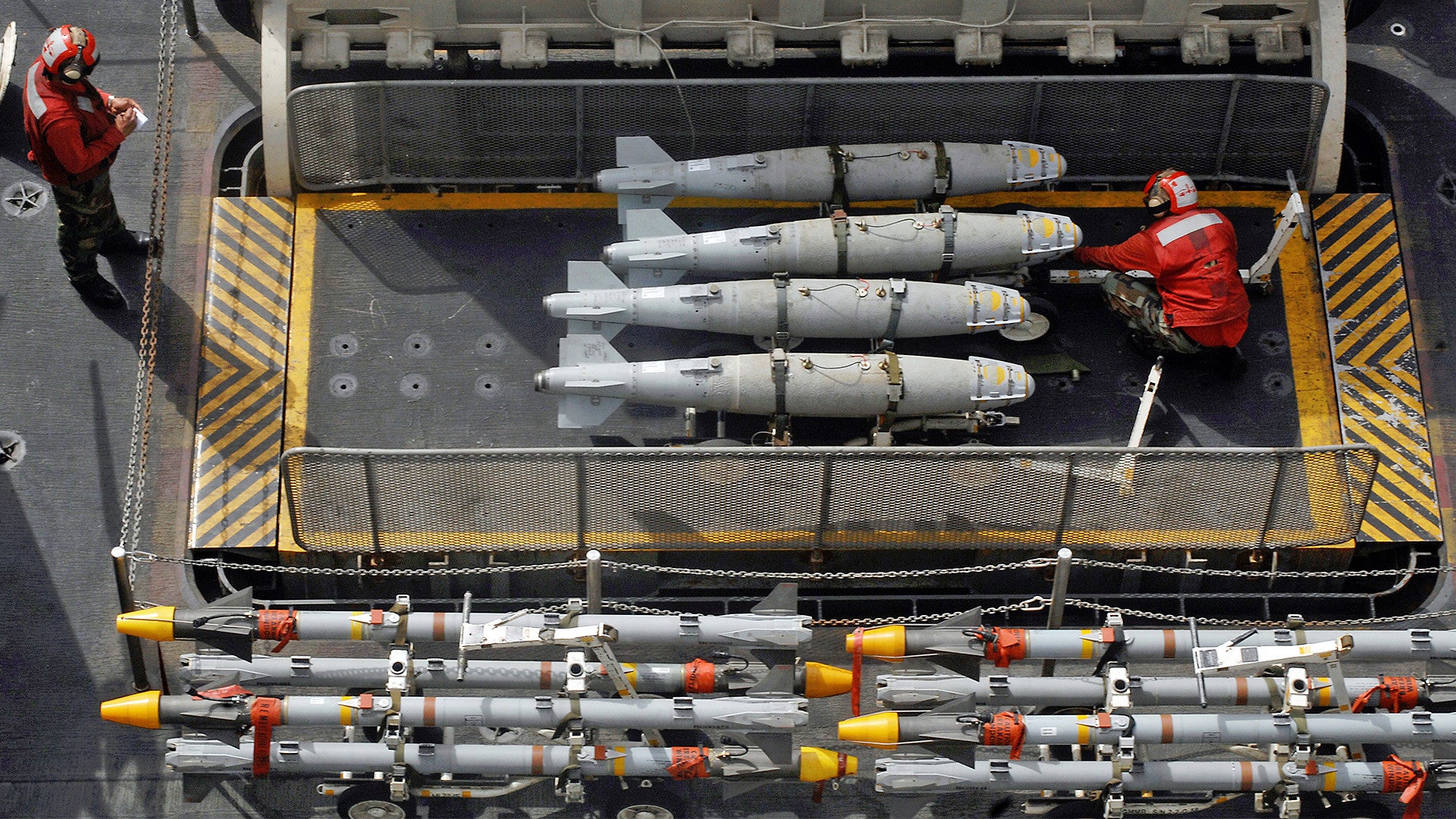
More Money, Less Security: Pentagon Spending
and Strategy in the Biden Administration
William D. Hartung / Tne Quincy Institute for Responsible Statecraft: Quincy Paper No. 12
Executive Summary
(June 8, 2023) — The Biden administration has requested $886 billion for national defense for Fiscal Year 2024, a sum far higher in real terms than the peaks of the Korean or Vietnam wars or the height of the Cold War. That figure could go even higher under the terms of the debt ceiling deal reached by President Biden and House Speaker Kevin McCarthy.
These enormous sums are being marshaled in support of a flawed National Defense Strategy that attempts to go everywhere and do everything, from winning a war with Russia or China, to intervening in Iran or North Korea, to continuing to fight a global war on terror that involves military activities in at least 85 countries.
Sticking to the current strategy is not only economically wasteful, but will also make America and the world less safe. It leads to unnecessary conflicts that drain lives and treasure and too often contribute to instability in the regions where those conflicts are waged, as occurred with the wars in Iraq and Afghanistan. In addition, elevating open–ended military commitments over other security challenges, from climate change to pandemics, risks intensifying the human and security consequences of those threats by reducing the resources available to address them.
America’s strategic overreach is compounded by the undue influence exerted by the arms industry and its allies in Congress, backed up by over $83 million in campaign contributions in the past two election cycles and the employment of 820 lobbyists, far more than one for every member of Congress.
The industry also leverages the jobs its programs create to bring lawmakers on board to fund ever higher budgets, despite the fact that the economic role of the arms sector has declined dramatically over the past three decades, from 3.2 million direct jobs to just one million now — six–tenths of one percent of a national labor force of over 160 million people. Last year alone Congress added $45 billion to the Pentagon budget beyond what the department requested, much of it for systems built in the states or districts of key members, a process that puts special interests above the national interest.
The United States could mount a robust defense for far less money if it pursued a more restrained strategy that takes a more realistic view of the military challenges posed by Russia and China, relies more heavily on allies to provide for the defense of their own regions, shifts to a deterrence–only nuclear strategy, and emphasizes diplomacy over force or threats of force to curb nuclear proliferation.
This approach could save at least $1.3 trillion over the next decade, funds that could be invested in other areas of urgent national need. But making a shift of this magnitude will require political and budgetary reforms to reduce the immense power of the arms lobby.
In addition to shifting to a more restrained defense strategy, a number of steps can be taken to weaken the economic grip of the arms industry on Pentagon spending and policy, including the following:
- Flag officers and senior Pentagon officials should be barred from going to work for any contractor that receives more than $1 billion per year in Pentagon contracts.
- End the practice of the defense sector funding the campaigns of members of the armed services committees and defense appropriations subcommittees of each house of Congress. Ideally, there should be a legal ban on such contributions, but if such a measure doesn’t pass legal muster the practice should be stigmatized to the point that relevant members voluntarily forgo such donations.
- Develop regional economic strategies that create civilian alternatives for heavily defense dependent areas. Given the urgent threat posed by climate change, much of this activity can be centered on creating new hubs for the development and production of green technologies.

More Spending Doesn’t Mean More Security
Spending on the Pentagon and related work on nuclear weapons at the Department of Energy is surging towards unprecedented levels. The Fiscal Year 2024 budget request of $886 billion for national defense is one of the highest figures since World War II, far more in inflation–adjusted dollars than the height of the Korean or Vietnam Wars or the peak year of the Cold War.1 (
The $886 billion figure does not include likely emergency military aid to Ukraine. And under the terms of the legislation that lifts the debt ceiling, Congress is free to add funds for the Pentagon’s regular budget beyond the $886 billion figure. According to the Congressional Budget Office’s analysis of the debt ceiling bill, “funding designated as an emergency requirement or for overseas contingency operations would not be constrained.”
This means, for example, that Congress could pass an emergency military aid package for Ukraine that includes not only funds needed for that nation to defend itself, but tens of billions of dollars for Pentagon or Congressional pet projects that have nothing to do with defending Ukraine. This is precisely what happened during the 10–year period covered by the 2011 Budget Control Act (BCA).
The Overseas Contingency Operations (OCO) account — nominally meant to fund the Iraq and Afghan wars — was used to pay for hundreds of billions of dollars worth of items unrelated to the wars, as a way to evade the caps on the Pentagon’s regular budget contained in the BCA.
Advocates of ever–higher Pentagon budgets often attempt to dismiss the large absolute increases in military spending in favor of measuring Pentagon spending in comparison to Gross Domestic Product (GDP). This approach is misleading for a number of reasons. Most saliently, there is no necessary correlation between military spending and the size of the economy. They grow at different rates, for different reasons. Military spending should be geared to the security threats faced by the United States, not an arbitrary comparison with GDP figures.
The massive Pentagon budget is supposed to be crafted to support the Biden administration’s National Defense Strategy (NDS), which was released late last year.5 But corporate influence, parochial politics in Congress, and bureaucratic inertia at the Pentagon have resulted in a budget that does not even align with the Biden defense strategy, much less a more realistic, restrained approach. Special interest politics has spurred investments in vulnerable, dysfunctional, or unnecessary systems ranging from more aircraft carriers, to the F–35 combat aircraft, to nuclear weapons in numbers far in excess of what is needed for deterrence.
And as will be discussed below, the Biden strategy itself is misguided, embracing too many missions and taking a military-first approach that underutilizes non-military tools of statecraft and under invests in addressing non–traditional risks like pandemics and climate change.
Arms contractors have multiple tools of influence that can be used to distort the budget towards funding of their favored weapons programs, even if they are not the best systems for defending the country.
The weapons industry made over $83 million in campaign contributions in the last two election cycles and employed 820 lobbyists, most of whom passed through the revolving door from the Pentagon or Congress to jobs in the weapons sector.6
Contractors also routinely leverage the jobs and income their programs generate in key states and districts to persuade Congress to put their special interests above the national interest. But the industry’s claims of economic benefit from their activities ignore the fact that jobs in the defense industry have dropped dramatically in the past three decades — from 3.2 million in the 1980s to one million now — and that virtually any other public investment would create more jobs than arms spending.
In addition to the distorting effect of special interest politics, the current national defense strategy is itself a flawed document. It is an object lesson in how not to make choices among competing priorities. The Biden strategy calls for the capability to win a war with Russia or China, prepare for war with Iran and/or North Korea, and continue a global war on terrorism that involves counter–terror activities in an estimated 85 countries.

Activities included in the estimate of counter-terror activities are “air and drone strikes, on–the–ground combat, so–called “Section 127e” programs in which US special operations forces plan and control partner force missions, military exercises in preparation for or as part of counterterrorism missions, and operations to train and assist foreign forces.”9 This is the very definition of military overreach. In the meantime, the existential threat of climate change is low on the list of priorities in the NDS.
The climate crisis receives slightly more attention in the administration’s broader National Security Strategy, but it has not received anywhere near the resources or attention lavished on military approaches to security. For more on the role of climate change in national and global security, see the appendix to this paper.
Using the administration’s current strategy as a guide to national security spending in the years to come will waste hundreds of billions of dollars while diverting resources from our most urgent challenges, many of which are non–military. Sticking to the current national defense strategy will make America and the world less safe.
A change of course is urgently needed. It’s time to develop a more restrained strategy that takes a more realistic view of the military challenges posed by Russia and China, relies more heavily on allies to provide for the defense of their own regions, shifts to a deterrence-only nuclear strategy, and emphasizes diplomacy over force or threats of force to curb nuclear proliferation.
An approach grounded in a strategy of restraint that relies on robust diplomacy rather than using it as a backstop to a policy of military interventionism would provide greater security at far lower cost, saving at least $1.3 trillion over the next decade relative to current plans.
The funds saved could be invested in programs that bolster non–military forms of security or to help reduce the federal deficit — or some combination of the two. Arms racing in a world of shifting power dynamics and accelerating humanitarian and environmental crises is a recipe for ongoing conflict, to the detriment of other urgent security priorities.
Alongside developing a more realistic, forward–looking strategy, a key part of crafting a sustainable and effective approach to defense must involve breaking the hold of arms contractor influence over the budget process.

Pentagon Budget: What Are We Buying?
As noted above, the Pentagon budget for Fiscal Year 2024 is at one of the highest levels ever. Of the four major categories in the Pentagon budget — military personnel, operations and maintenance, procurement, and research and development — the biggest total increase came in the two accounts related to building and developing weapons, procurement and research and development (R&D).
The two accounts are together slated to receive a total of $315 billion in Fiscal Year 2024. The administration has described the $145 billion set aside for R&D as the highest level ever. These categories of the budget are the ones that largely go to private contractors, as does a portion of the Operations and Maintenance (O&M) account. If the experience of recent years continues, more than half of the Pentagon budget will go to corporations. As a result, the new budget is good news for major weapons contractors like Lockheed Martin, Boeing, Raytheon, General Dynamics, and Northrop Grumman.
As described in more detail below, some of the biggest items on the Pentagon’s shopping list — from F-35 combat aircraft to aircraft carriers to a new intercontinental ballistic missile (ICBM) — are systems that are either dysfunctional or out of line with the purported goals of the department’s current strategy.

The Pentagon is also increasing spending on high tech capabilities like artificial intelligence, cybersecurity, and hypersonic weapons. The enthusiasm for these systems must be tempered with lessons from past surges of interest in high tech solutions, which have produced weapons and support systems that are too often expensive, hard to use, and overly complicated to maintain — and therefore of limited utility in the event of actual combat.
There are also serious concerns about the potential use of next generation weaponry in an autonomous mode, launched and targeted without human intervention, as documented in a February 2023 analysis by Michael T. Klare for the Arms Control Association. Klare summarizes the risks as follows:
[As] countries accelerate the exploitation of new technologies for military use, many analysts have cautioned against proceeding with such haste until more is known about the inadvertent and hazardous consequences of doing so. Analysts worry, for example, that AI-enabled systems may fail in unpredictable ways, causing unintended human slaughter or uncontrolled escalation.17
The above mentioned challenges are compounded by the fact that much of the $45 billion Congress added to the Pentagon’s FY 2023 budget request was for extra ships and planes that do not clearly fit into any rational defense strategy, but are frequently included for parochial reasons — because they bring jobs and revenue to states and districts of members of Congress with the most authority over the size and shape of the Pentagon’s budget.
In what can only be seen as a polite understatement, Pentagon Comptroller Mike McCord noted in his briefing on the Fiscal Year 2024 budget that many of the things included in the Fiscal Year 2023 Congressional add-ons were for things that were “in many cases lower priorities” from the Pentagon’s perspective.
Read the entire report online at: https://quincyinst.org/report/more-money-less-security-pentagon-spending-and-strategy-in-the-biden-administration/
Posted in accordance with Title 17, Section 107, US Code, for noncommercial, educational purposes.